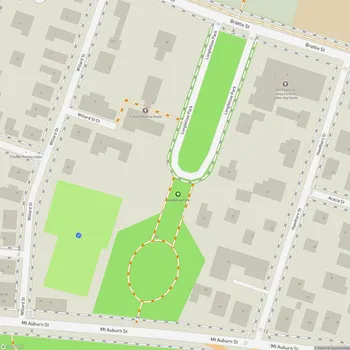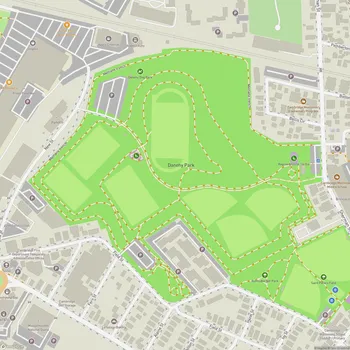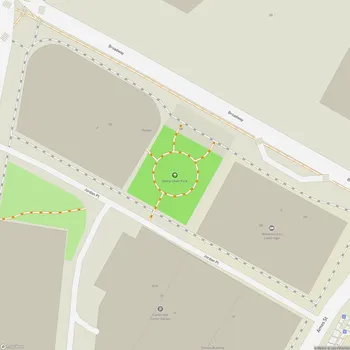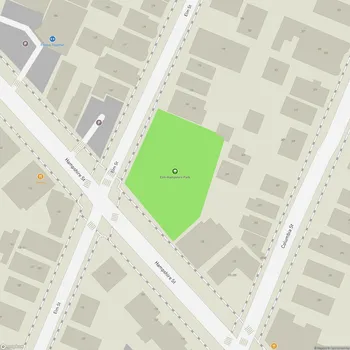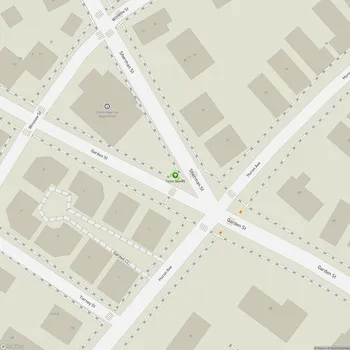Fort Washington Park
Interactive Park Map
About Fort Washington Park
A Piece of Revolutionary History
Found on Waverly Street in Cambridge sits Fort Washington Park, the last remaining Revolutionary War fortification in the city and the only surviving structure from the Siege of Boston. Walking through this modest green space, you're literally treading on ground where Continental Army soldiers stood in 1775, following orders from none other than George Washington himself.
The park's grassy embankments aren't just for show - they mark the actual locations of the original earthworks. Four cannons point toward the Charles River, a silent reminder of the strategic position this fort once held. What makes this place extra special is that archaeological studies have confirmed these earthworks are original (and quite fragile), giving you a rare, authentic connection to America's revolutionary past.
From Battlefield to City Park
By 1857, Cambridge had acquired the property and began its transformation into the park we see today. The city installed three hefty 18-pounder cannons from old Fort Winthrop and commissioned architect John R. Hall to design the elaborate granite and iron fence that still surrounds the site. Look closely at that fence - it features tiny decorative cannons, making for a distinctive park enclosure.
The park has seen several facelifts over the years, with a major renovation in the 1970s when over $400,000 in Bicentennial and National Park funds helped restore the cast iron fence to how it looked back in 1859. The fort's historical significance was officially recognized when it joined the U.S. National Register of Historic Places in 1973.
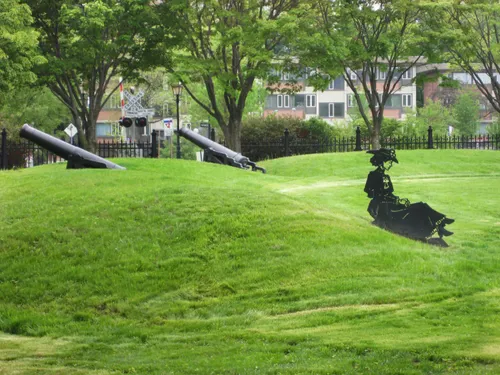
The Changing Landscape
Here's something that might surprise you: Fort Washington originally sat right on the Charles River's banks. Thanks to various land-filling projects (MIT's expansion being a major contributor), the fort now stands about a mile from today's riverbank - quite the geographic shift!
When Washington arrived in 1775 to take command of colonial forces surrounding Boston, he authorized this fort as part of his strategy to control river access to Cambridge. The fortification played a key role in the American siege of British-occupied Boston during those early Revolutionary War days.
Far From Just History
While its historical significance is undeniable, Fort Washington Park serves the community in multiple ways today. It's a peaceful green space where locals come to unwind, and you'll often spot neighborhood dog owners walking their four-legged friends along the paths.
The park also works as an outdoor classroom of sorts, where you can connect with local history in a tangible way. Community events and gatherings frequently take place here.
Art Meets History
Adding another dimension to the park are metal silhouettes created by artist Madeline Lord and installed in 1987. These striking sculptures, modeled after historical reenactors, offer glimpses of the people who would have populated the fort throughout its history. They stand as representations of the more than 16,000 American soldiers who participated in the Siege of Boston.
These artistic elements complement the historical features, creating an environment where past and present converge. You'll also notice a flagpole that was installed in 1968 through community fundraising efforts - it has become an important patriotic symbol that completes this historical landscape.
All Features & Facilities
Nature & Wildlife
Visitor Services
Photo Gallery (click to enlarge)

ParkMagnet Score
Decent Park
